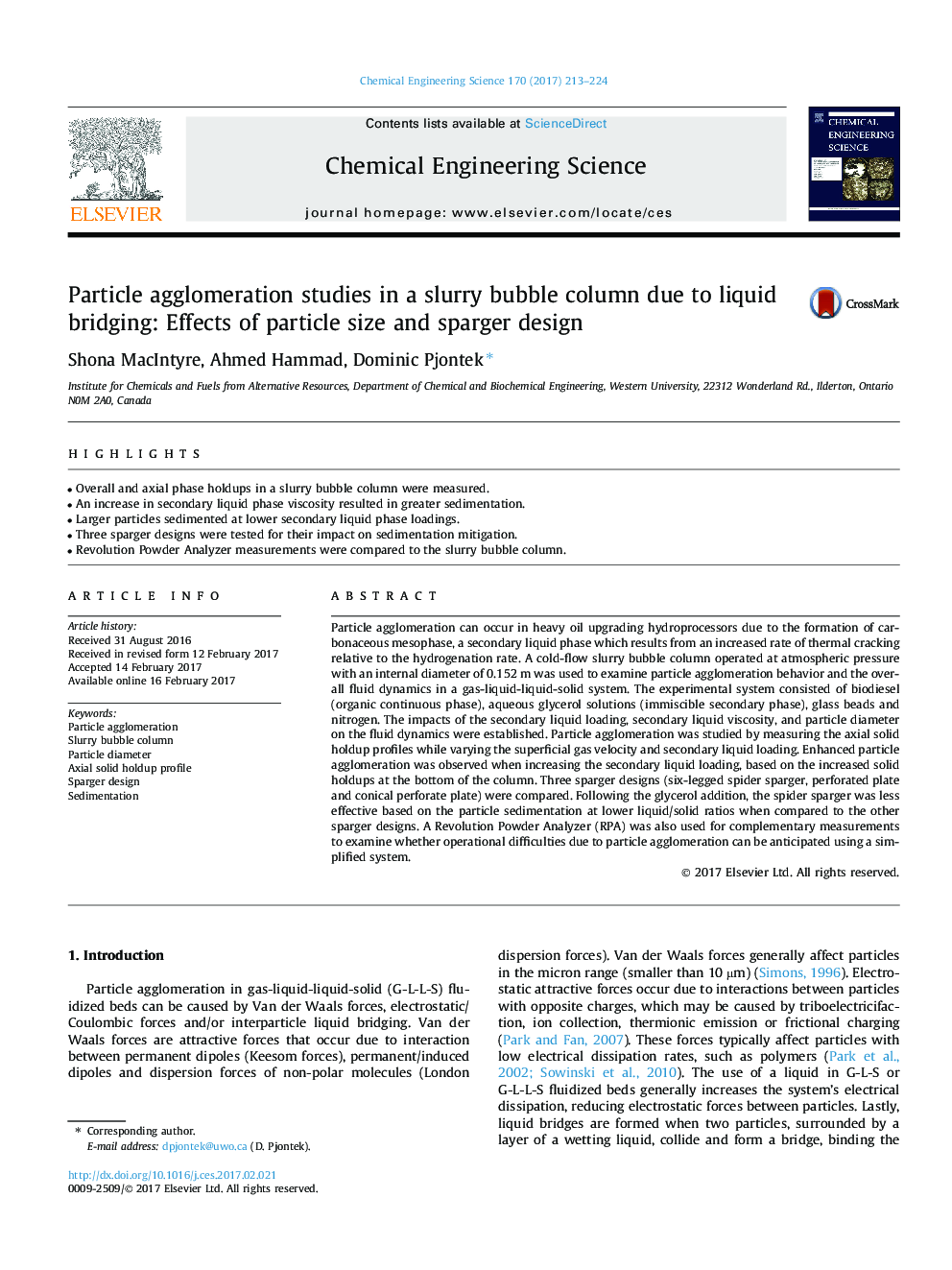| کد مقاله | کد نشریه | سال انتشار | مقاله انگلیسی | نسخه تمام متن |
|---|---|---|---|---|
| 6467222 | 1423249 | 2017 | 12 صفحه PDF | دانلود رایگان |
- Overall and axial phase holdups in a slurry bubble column were measured.
- An increase in secondary liquid phase viscosity resulted in greater sedimentation.
- Larger particles sedimented at lower secondary liquid phase loadings.
- Three sparger designs were tested for their impact on sedimentation mitigation.
- Revolution Powder Analyzer measurements were compared to the slurry bubble column.
Particle agglomeration can occur in heavy oil upgrading hydroprocessors due to the formation of carbonaceous mesophase, a secondary liquid phase which results from an increased rate of thermal cracking relative to the hydrogenation rate. A cold-flow slurry bubble column operated at atmospheric pressure with an internal diameter of 0.152Â m was used to examine particle agglomeration behavior and the overall fluid dynamics in a gas-liquid-liquid-solid system. The experimental system consisted of biodiesel (organic continuous phase), aqueous glycerol solutions (immiscible secondary phase), glass beads and nitrogen. The impacts of the secondary liquid loading, secondary liquid viscosity, and particle diameter on the fluid dynamics were established. Particle agglomeration was studied by measuring the axial solid holdup profiles while varying the superficial gas velocity and secondary liquid loading. Enhanced particle agglomeration was observed when increasing the secondary liquid loading, based on the increased solid holdups at the bottom of the column. Three sparger designs (six-legged spider sparger, perforated plate and conical perforate plate) were compared. Following the glycerol addition, the spider sparger was less effective based on the particle sedimentation at lower liquid/solid ratios when compared to the other sparger designs. A Revolution Powder Analyzer (RPA) was also used for complementary measurements to examine whether operational difficulties due to particle agglomeration can be anticipated using a simplified system.
Journal: Chemical Engineering Science - Volume 170, 12 October 2017, Pages 213-224
